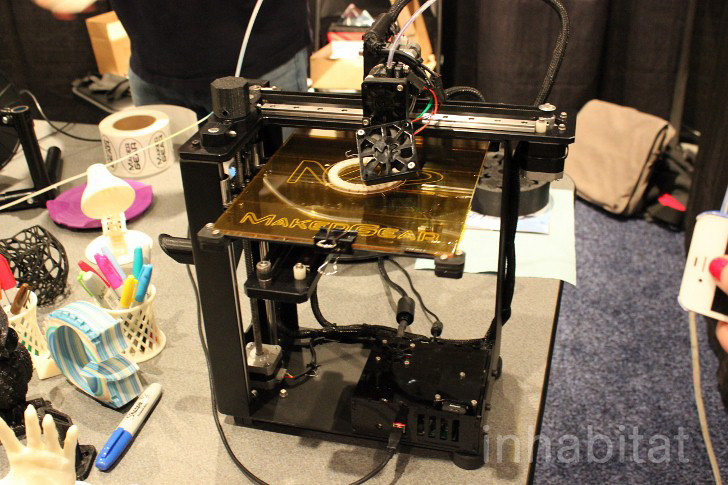Last week, I was lucky enough to break out of the balmy -20 degree Milwaukee weather and take a trip to Vegas to the Consumer Electronics Show. I had a great time at last year's show, and this year did not disappoint!
But let's skip the technobabble. Here are three things that will potentially change the way we entertain, build, and excercise in the next few years. 3D gaming, 3D printing, and fitness.
3D gaming
Imagine walking down a street in a video game, and being able to look up, down, left, right. Now imagine being able to look in back of you. That's what the Oculus Rift. promises to bring to gaming.
Looks stupid, right? It was. And I loved it. Reminds me of the horrible virtual reality games in the arcades of the 80s and early 90s. Remember these?
Also. Display port had an amazing 3 monitor setup. 3 FREAKING HUGE monitors. I couldn't even fit this inside of my apartment, but I want it!
3D printing
I've blogged about 3D printing in the past, and there was a huge showing at the conference. 3D printing is pretty much what it sounds like - a printer that can print a plastic object such as an action figure, a ball, or a mask. Tons of cool companies like Makerbot, Kevvox, and Sculpteo were printing small 3D trinkets left and right. Some great examples are below. 3D printing is still a little too expensive ($2000+, plus printing material) to bring into the mainstream, but give it a good 5 years or so and we'll be printing our own toys at a reasonable price. Secret Santa will be even more awesome.
Fitness
I've been borrowing a Fitbit Flex from Verizon Wireless for review, and it's become my best buddy. I leave it on my wrist (even in the shower - it's waterproof) and it automatically tracks my steps, active minutes, calories burned, etc.
I forget that it's on, which is exactly the point. The only time I don't forget about it is when I have to charge it by removing a smal part and plugging it up to a computer, which is more often then I'd like (every day or two). For these things to really go mainstream, wireless charging would be a huge benefit. Imagine that I can just throw my Fitbit Flex on a wireless pad like a Powermat. Or even better, placing a wireless charger under my pilow (or make the whole pillow a wireless charger) so that going to sleep instantly charges the device. I know, big dreams, and I could fry my head ... but it would be awesome.
My favorite fitness gadget was the Infomotion 94Fifty - a basektball with a bunch of sensors in it that measure ball rotation, velocity, the arc of your shot, and tons of other variables. As you dribble, shoot, and pass, you get instant feedback from the voice of a snarky coach.
For example, when shooting a free throw, you shoudl shoot at an arc of 40 degrees, which is REALLY hard for the average person. All I heard most of the time was the coach saying "Get that arc up" and other remarks. If I had this as a kid, I might actually have been a good basketball player. Maybe it would have helped me grow to 6' tall to.
Keep an eye out on 3D gaming, 3D printing, and fitness gagdgets in the next few years - things are gonna change!

















